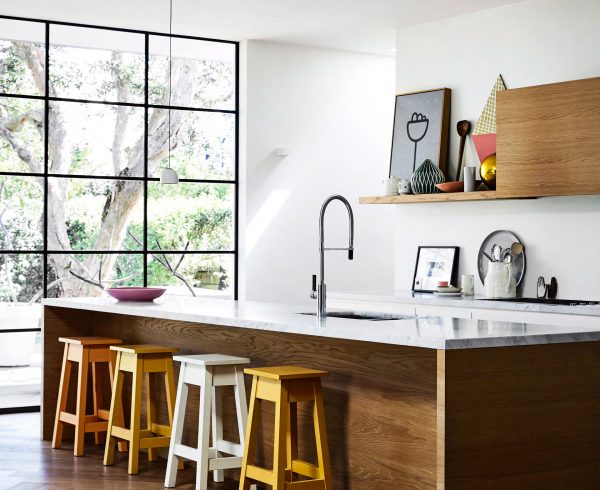It’s all too easy to associate dark colours with negative connotations and a general sense of doom, but don’t be too hasty, say the team at Resene.
Shades like black, navy and deep grey are also reminiscient of night skies and crisp winter nights.
Bedrooms are an ideal space for dark walls. Most of the time spent in the bedroom is at night – making it the perfect place to go dark and dramatic. Dark greys and inky blues are especially popular at present. Think colours like Resene Foundry, Resene Fuscous Grey and Resene Dark Side. To get a velvety rich effect, use Resene SpaceCote Flat instead of low sheen. It absorbs the light more, making the room look richer.
Using darker shades brings texture and mood, especially to a featureless space. Dark walls with a different shade on the floor or trims, for example, will create lines of difference and interest in the room that wasn’t there before. It can also help a cavernous room feel cosier.


Take a test
Before committing to an aesthetic overhaul, test the colours out on a large sheet of cardboard, leaving an unpainted border around the outside. You want to use a piece of card large enough to see how the colour will go with your existing furniture and home’s design features.
Once you’ve compared shades, you’ll be able to settle on the exact dark hue you’re happy with. Remember, there are plenty of shades to play with – deep shades can have blue, green and brown tones, which can all affect how they look on your wall. Be sure to consider the placement of windows – the shade will look a lot different in a space that receives lots of sunlight, compared to one that doesn’t.


Mix it up
Don’t be afraid to mix things up between rooms – just be sure that whatever colour you pick within a single room is consistent. If you want to use a dark hue in a shared space, but you’ve got an expansive open-plan kitchen, dining and living area, pick a single dark shade for a feature wall and paint the remaining walls in a complementary neutral with cool or warm tones depending on whether your feature colour has cool or warm tones.
Create drama
Dark colours are excellent because you can create contrast. Why not make a splash with Resene Tuna? This measured grey looks striking when paired with crisp, white accents and a touch of bright colour – think bright yellow or red cushions or artwork.
Focus closely on key features, such as the ceiling and flooring. Cool grey pairs well with off-white, while a dark yet warm brown looks stunning with thick-pile cream carpet.
You can create a dramatic living space or bedroom by ensuring you offset dark shades with light touches. Follow this tip and you’re on the road home!

Focus on features
Be sure to play up your home’s best design features. Window frames, crown moulding, built-in storage and archways are examples of features that can be played up with the right paint selection.
You can make these features stand out with dark paint – just ensure that the surrounding area embraces a light shade in order to achieve a wonderful contrast.


Remember the contrasts
Whether you go charcoal, dark green, or deep oxen red, having a contrast on the floors, trims and ceiling helps to delineate the area, preventing it from becoming claustrophobic – instead, it helps to enlarge the space visually.
As a whole-room solution, team dark neutrals with cream or crisp white trims. This works especially well with older homes where the skirtings, architraves and cornices are likely to be more ornate and will be beautifully highlighted by the contrast with smoky dark walls.
Think beyond your walls, to floors, ceilings and furniture. These can easily be painted a dark colour too. If you’re living in a villa with a high stud, a dark ceiling can help make the ceiling feel lower and the room feel cosier.
If you’re changing from a light colour scheme to a dark one, make sure you review your lighting at the same time. You may find you need a little extra lighting or a stronger light bulb to balance the darker walls.
For more visit www.resene.co.nz






Leave a Comment